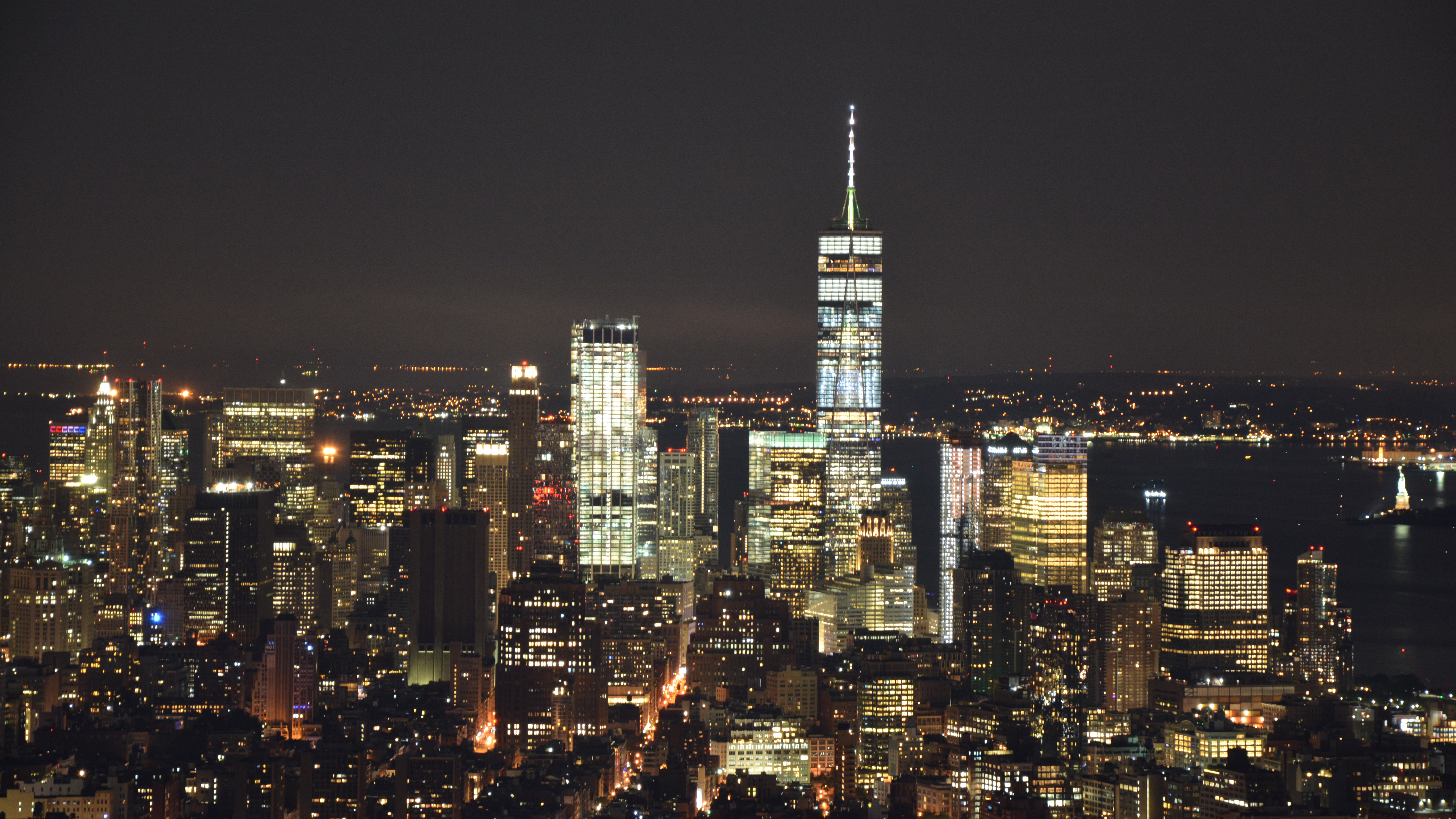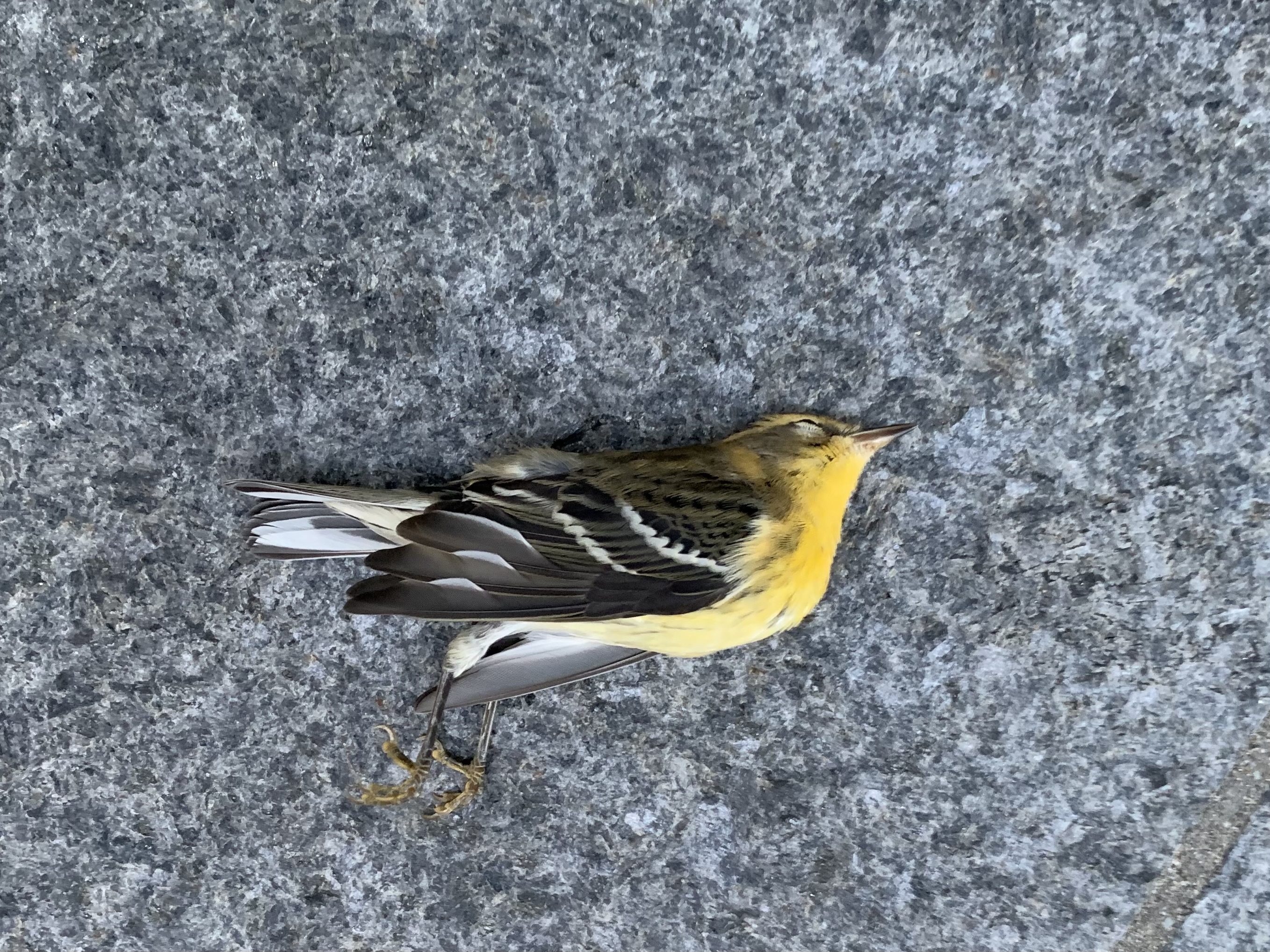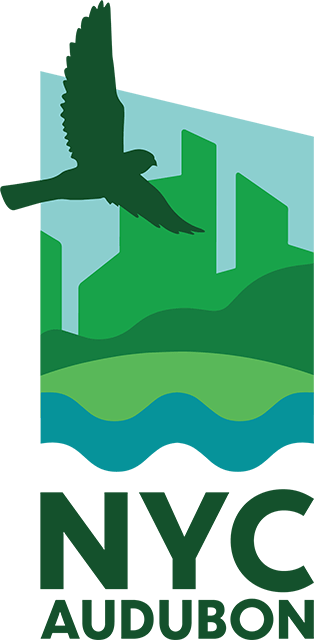Lights Out Laws Move Forward
category: CONSERVATIONURBAN AUDUBONADVOCACY

Artificial nighttime lighting (here, in Manhattan’s World Trade Center area) attracts night-migrating birds, causing them to stray from their natural migration paths. The birds then may become disoriented and collide with glass windows, either at night or in the morning. Photo: alpe89/CC BY-NC-ND 2.0
LIGHTS OUT LAWS MOVE FORWARD
This article appears in the spring 2022 issue of The Urban Audubon.
By Suzanne Charlé
On December 15, NYC Audubon and other members of the Lights Out Coalition celebrated the New York City Council’s unanimous passage of Lights Out bills Int. 274 and Int. 271.
“We’ve made a big step forward,” said Kaitlyn Parkins, interim director of conservation and science for NYC Audubon. Bill 274, introduced by City Council Member Helen Rosenthal, requires that all nonessential outdoor lighting be turned off between 11pm and 6am during peak avian migration periods in City-owned buildings, as well as buildings fully leased by the City. Bill 271, introduced by City Council Member Justin Brannan, requires occupancy sensors that limit illumination in buildings owned by the City. A third bill, Int. 265, which would require similar provisions for privately owned buildings, was not advanced to a vote.
Two weeks earlier, Parkins and over a dozen Lights Out Coalition experts from organizations including the Sierra Club and the International Dark-Sky Association had appeared before the City Council’s Environmental Protection Committee, urging that the three bills be passed to protect the 350-plus bird species that live in or pass through the five boroughs. They and the Council Members backing the bills were optimistic: two years ago, in December 2019, the City Council passed milestone bird-friendly building legislation, Local Law 15, which requires that all future buildings, including those to be significantly altered, be built with bird-friendly materials that reduce bird-window collisions.
At the hearing, Parkins explained that the three proposed laws would constitute an important “second step” by reducing nighttime light pollution: “Turning off lights stops nocturnal collisions with lit windows and reduces the number of birds attracted to areas where they are at risk of collisions during the day.”
Science was at the heart of Parkins’ presentation. She noted that “70 percent of North American bird species are migratory; of these, 80 percent migrate at night.” According to radar data from the Cornell Lab of Ornithology, millions of birds fly over the City every year during spring and fall migration. “The bright lights of the City skyline disrupt birds’ migration and attract them off their routes from up to three miles away. Unable to continue their passage, they land in unsafe places, vulnerable on our sidewalks to predators and traffic, unable to find nutritious food, with a maze of built infrastructure to navigate. But many don’t even make it that far, instead crashing into lit windows, their thousand-mile journeys ending abruptly in deadly collisions with glass.”
In fact, a mass mortality event on September 14, 2021, made headlines across the country: over 200 dead songbirds were found around four buildings in Lower Manhattan—all killed by colliding with windows. NYC Audubon’s Project Safe Flight research indicates that up to 230,000 birds die in New York City each year in such collisions.
City Council Member Rosenthal first became aware of this danger to birds because her Upper West Side office is next to the Wild Bird Fund (WBF). “People often knock on my door with a worried look and a box with a wounded bird!” she said. Rita McMahon, director and co-founder of WBF, reported that over 60,000 birds have been rehabilitated there since the nonprofit’s founding in 2005. Light pollution likely contributed to the deaths of many of those birds; nighttime lighting is one of three important factors in collision mortality cited in a 20-year study conducted in Chicago.
NYC Audubon Advisory Council Member Andrew Farnsworth, senior research associate for the Cornell Lab of Ornithology, is one of the authors of that study. He reports that by halving the area of windows illuminated at Chicago’s McCormick Place during spring migration, collisions were reduced by about 60 percent. Chicago’s highly successful Lights Out program limits the amount and timing of exterior lighting and also reduces interior lighting visible from the outside using timers, dimmers, and the like. (Rosenthal had recommended that Int. 274 include a provision to limit interior lighting, but this element was not included in the final bill.) Since 1995, Chicago’s tall commercial buildings in “the Loop” district have participated in the program, saving the lives of an estimated 10,000 birds annually.
Parkins praises the comprehensiveness and effectiveness of Lights Out Chicago, but adds that the program’s voluntary approach isn't a good fit for New York City. “We have a million buildings,” she said. Getting individual private buildings to sign on “is really a Herculean effort.” In the past, NYC Audubon has found that even when a building did sign on, a few years later, if management changed, the building would drop out. “There is just too much turnover in ownership and management.”
Hence, the focus of New York City’s Lights Out Coalition is on legislation. Having successfully navigated the passage of bills 274 and 271, which became law in mid-January, the coalition will soon meet to strategize next steps. “We’ve made a big step forward, but we’ve got a long way to go,” Parkins said.
Among the further steps planned: negotiating with REBNY (the Real Estate Board of New York) to create additional bills to limit interior lighting and expand the current laws to privately owned buildings. “We worked with REBNY to pass Local Law 15—we compromised, they compromised, and it got passed,” says Parkins.
On behalf of the City’s nighttime migrants, let’s hope that the spirit of compromise continues. To learn more about light pollution and how it can be reduced to protect migrating birds, visit nycaudubon.org/artificial-light.
NYC Audubon Advisory Council Member Andrew Farnsworth, senior research associate for the Cornell Lab of Ornithology, is one of the authors of that study. He reports that by halving the area of windows illuminated at Chicago’s McCormick Place during spring migration, collisions were reduced by about 60 percent. Chicago’s highly successful Lights Out program limits the amount and timing of exterior lighting and also reduces interior lighting visible from the outside using timers, dimmers, and the like. (Rosenthal had recommended that Int. 274 include a provision to limit interior lighting, but this element was not included in the final bill.) Since 1995, Chicago’s tall commercial buildings in “the Loop” district have participated in the program, saving the lives of an estimated 10,000 birds annually.
Parkins praises the comprehensiveness and effectiveness of Lights Out Chicago, but adds that the program’s voluntary approach isn't a good fit for New York City. “We have a million buildings,” she said. Getting individual private buildings to sign on “is really a Herculean effort.” In the past, NYC Audubon has found that even when a building did sign on, a few years later, if management changed, the building would drop out. “There is just too much turnover in ownership and management.”
Hence, the focus of New York City’s Lights Out Coalition is on legislation. Having successfully navigated the passage of bills 274 and 271, which became law in mid-January, the coalition will soon meet to strategize next steps. “We’ve made a big step forward, but we’ve got a long way to go,” Parkins said.
Among the further steps planned: negotiating with REBNY (the Real Estate Board of New York) to create additional bills to limit interior lighting and expand the current laws to privately owned buildings. “We worked with REBNY to pass Local Law 15—we compromised, they compromised, and it got passed,” says Parkins.
On behalf of the City’s nighttime migrants, let’s hope that the spirit of compromise continues. To learn more about light pollution and how it can be reduced to protect migrating birds, visit nycaudubon.org/artificial-light.



